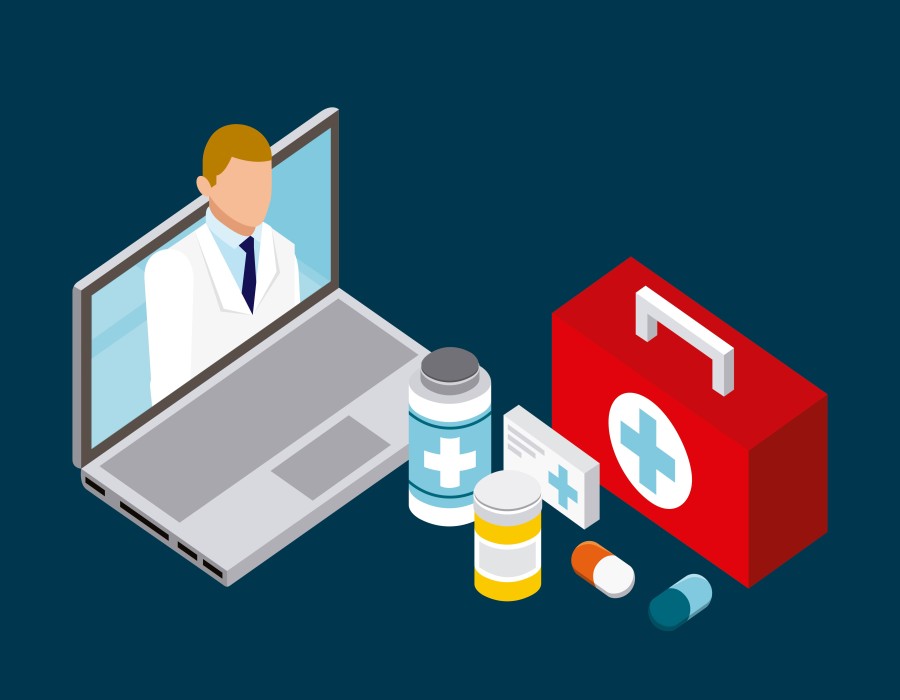Telemedicine and remote patient monitoring (RPM) have transformed healthcare by enabling patients and providers to interact from anywhere, improving accessibility, and reducing the burden on traditional care facilities. Technological innovations are driving this shift, empowering patients with continuous monitoring while offering healthcare providers powerful tools to manage care efficiently. Below are the top innovations in telemedicine and remote patient monitoring tools that are revolutionizing healthcare delivery:
#1. Teleconsultation Platforms
Teleconsultation platforms are at the core of the telemedicine revolution. These platforms enable real-time video consultations between patients and healthcare providers, allowing them to diagnose, treat, and follow up on health conditions without needing in-person visits. Some of the leading teleconsultation tools, such as Teladoc and Amwell, offer seamless integration with electronic health records (EHR) and remote monitoring devices, making virtual care more comprehensive.
Key Features:
- Real-time video consultations
- Secure messaging and file sharing
- Integration with EHR systems
- Scheduling and payment portals
#2. Remote Monitoring Systems
Remote monitoring systems provide continuous tracking of patients' vital signs, such as heart rate, blood pressure, and glucose levels, allowing healthcare professionals to monitor chronic conditions remotely. These systems reduce the need for hospital visits and enable early detection of health problems. Tools like CareSimple and Vivify Health offer real-time data insights that help providers make informed decisions about patient care.
Key Features:
- Real-time data transmission
- Automated alerts and notifications for abnormal readings
- Remote tracking of chronic conditions
- Integration with telehealth platforms
#3. Wearable Health Devices
Wearable health devices have become a critical innovation in RPM, allowing patients to monitor their health in real-time. Devices like the Apple Watch and Fitbit collect data on physical activity, heart rate, sleep patterns, and more. Wearables are especially helpful for patients managing chronic diseases like hypertension, diabetes, and heart conditions. They also play a significant role in preventive care by alerting users to changes in health metrics.
Key Features:
- Continuous health monitoring
- Data integration with healthcare apps and platforms
- Notifications for abnormal readings
- User-friendly interfaces
#4. Mobile Health Apps
Mobile health apps, or mHealth apps, bring healthcare directly to the user’s smartphone. Apps like MyChart and Babylon Health allow patients to manage appointments, access health records, and receive health recommendations from AI-powered algorithms. These apps are also integrated with telemedicine platforms, enabling virtual consultations and providing remote monitoring capabilities. Patients can track medication adherence, lifestyle changes, and treatment plans with ease.
Key Features:
- AI-driven health assessments
- Remote consultations and prescription management
- Symptom tracking and medication reminders
- Easy access to health records
#5. Integrated Patient Care Platforms
Integrated patient care platforms combine multiple healthcare functions into one system. These platforms connect telemedicine, RPM, EHRs, and patient engagement tools to provide comprehensive care. Epic Systems and Cerner are examples of such platforms that offer robust telemedicine capabilities while enabling healthcare providers to manage patient data and interactions in a centralized location.
Key Features:
- Unified patient data management
- Seamless integration with telemedicine and RPM tools
- Collaborative care coordination
- AI-powered insights and predictive analytics
#6. Specialized Monitoring Tools
Specialized monitoring tools cater to niche medical conditions and requirements. For instance, Omron’s HeartGuide is a wearable device designed to monitor blood pressure, while glucose monitors like Dexcom cater to diabetic patients. These specialized tools provide precise, real-time data tailored to specific health conditions, enabling healthcare providers to customize care plans based on the patient’s unique needs.
Key Features:
- Condition-specific monitoring and reporting
- Continuous data collection for specialized care
- Integration with telehealth platforms for virtual care
- User-friendly interfaces for patients
#7. Data Analytics and AI Platforms
Data analytics and AI are reshaping telemedicine and RPM by enabling predictive insights and personalized care. Platforms like Health Catalyst and Qventus leverage machine learning algorithms to analyze large sets of health data. These platforms can detect early signs of disease progression, predict patient outcomes, and optimize treatment plans. AI tools help healthcare providers manage population health and identify high-risk patients before complications arise.
Key Features:
- Predictive analytics for personalized care
- AI-driven insights and recommendations
- Data-driven decision support for providers
- Improved patient engagement and outcomes
#8. Telepsychiatry and Mental Health Platforms
Telepsychiatry platforms are increasingly popular in delivering mental health services. Platforms like Talkspace and BetterHelp offer online therapy and counseling, allowing patients to access mental health professionals from the comfort of their homes. Telepsychiatry helps bridge the gap in mental health services, especially for those in rural or underserved areas. It also offers anonymity and privacy, encouraging more patients to seek help.
Key Features:
- Virtual therapy sessions with licensed professionals
- Secure, encrypted communication
- Integration with other telemedicine tools
- Mental health tracking and progress reports
#9. Home Health Care Solutions
Home health care solutions enable elderly or chronically ill patients to receive care in the comfort of their homes. Tools like Philips Lifeline and TytoCare offer remote consultations and RPM for conditions like post-surgical care, chronic disease management, and rehabilitation. These solutions reduce the need for hospital readmissions and allow patients to recover in a familiar environment, supported by remote health monitoring and virtual visits from caregivers.
Key Features:
- Remote consultation and RPM for homebound patients
- Customizable care plans and continuous monitoring
- Emergency alert systems
- Care coordination with healthcare providers
Conclusion
The rapid evolution of telemedicine and remote patient monitoring tools is transforming healthcare delivery by making it more accessible, patient-centered, and data-driven. Innovations such as teleconsultation platforms, wearable devices, and AI-powered analytics are empowering healthcare providers to offer better care while improving patient outcomes. As technology continues to advance, these tools will play an even more significant role in shaping the future of healthcare, making it possible to provide high-quality care remotely, efficiently, and in real-time.
Explore more details on Telemedicine App Development – Features, Benefits, and Trends





Comments